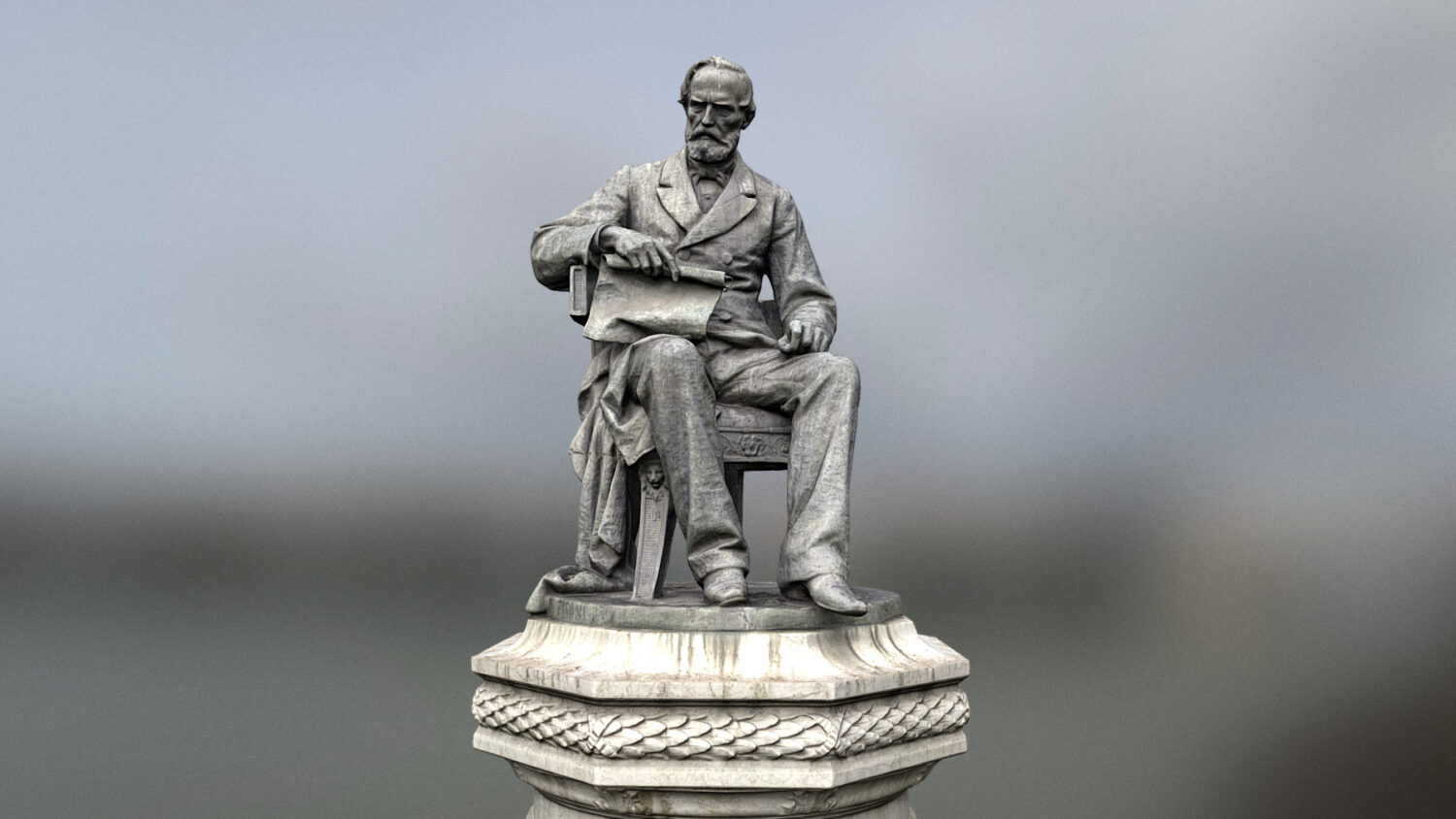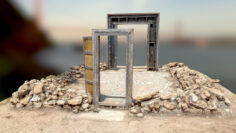GB Piatti of Milan
A bronze statue of Giovanni Battista Piatti, an inventor born in Milan Italy in 1813 who created and perfected compressed air drilling rigs thanks to which it was possible to build the Fréjus Road Tunnel, which connects Italy and France under the Alps.
The monument, inaugurated in 1894, is composed of a beautiful bronze statue by the sculptor Salvatore Pisani – a pupil of Barzaghi and author of various statues on the spiers of the Milan Cathedral – supported by a high pedestal designed by Luca Beltrami who was a admirer of GB Piatti.
GB Piatti had a troubled story as his invention was unscrupulously patented by others and he never saw fame or fortune in his lifetime. In the statue he is portrayed seated with a severe and frowning expression, his gaze down, and his right hand holding a card that some say is the refusal of his patent.
The pedestal bears the inscription “In February 1853 he was the first to propose for the Cenisio tunnel original and practical applications of compressed air. To the merit of the arduous undertaking to which fate denied honors and rewards in life friends admirers erected”.
The Fréjus Road Tunnel, also known as the Mont Cenis Tunnel, is 13 kilometers long (8.1 miles) and runs under Col du Fréjus in the Cottian Alps between Modane in France and Bardonecchia in Italy. It is one of the major trans-Alpine transport routes between France and Italy and is used for 80% of the commercial road traffic.
No tunnel of similar length had been attempted before and to complete it PB Piatti had to solve two fundamental problems: rapid rock excavation, needed to eliminate the use of hand-drilled mines, and ventilation of the tunnel. His use of compressed air solved both problems simultaneously.
Construction of the tunnel started in 1974, and it came into service on 12 July 1980. It cost 2 billion francs and is the thirteenth longest road tunnel in the world. Over 20 million vehicles passed through the tunnel during the first 20 years
Fréjus Underground Laboratory
Near the midpoint of the tunnel is the Fréjus Underground Laboratory. It houses the Neutrino Ettore Majorana Observatory (NEMO experiment), an international collaboration of scientists searching for neutrinoless double beta decay. An observation of neutrinoless double beta decay would be evidence that neutrinos are Majorana particles and could be used to measure the neutrino mass. To this day, it has not been found.









